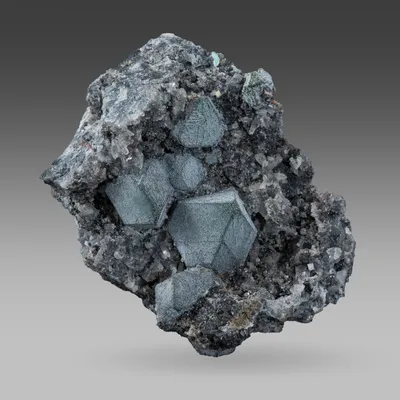Title
acanthite
Composition
Ag2S
Crystal System
Monoclinic
Status at Tsumeb
Believed valid
Abundance
Extremely rare
Distribution
Undetermined
Paragenesis
Hypogene (?); supergene; post-mining.
Type Locality
No
Entry Type
Species TSNB2
General Notes
Acanthite was first reported at Tsumeb by Strunz et al. (1958a) who noted that it was "… new for Tsumeb". It is "extremely rare" at the locality according to Lombaard et al. (1986) and is generally observed only in silver-rich sulphide ores by means of reflected light microscopy.
Bartelke (1976) stated that argentite [= acanthite], "… in its finely divided form is, in addition to silver, mainly responsible for the precious metal content [of the ore]." He cited Schneiderhöhn (1929) who noted that the silver grade of ore at Tsumeb was directly proportional to the copper content with 200 g/tonne silver for every 10 % copper content. (Note that argentite refers, strictly, to the higher temperature form of Ag2S which is not stable at ambient temperature; it is not an IMA-approved mineral species.)
Pinch and Wilson (1977) followed Bartelke (1976) in describing acanthite as "Finely disseminated in ores containing native silver", while Keller (1984) mentioned only that, according to Bartelke (1976), acanthite has been identified by ore microscopy.
Hughes (1987) commented that "Acanthite, after argentite, has rarely been observed."
Gebhard (1999) listed acanthite as "rare" but with no further comment.
Minute needles of acanthite on native silver are almost certainly of supergene (or even post-mining) origin.
Associated Minerals
chalcocite; galena; silver
Pseudomorphs
Acanthite has been reported to form pseudomorphs after argentite (rare; Hughes 1987).


